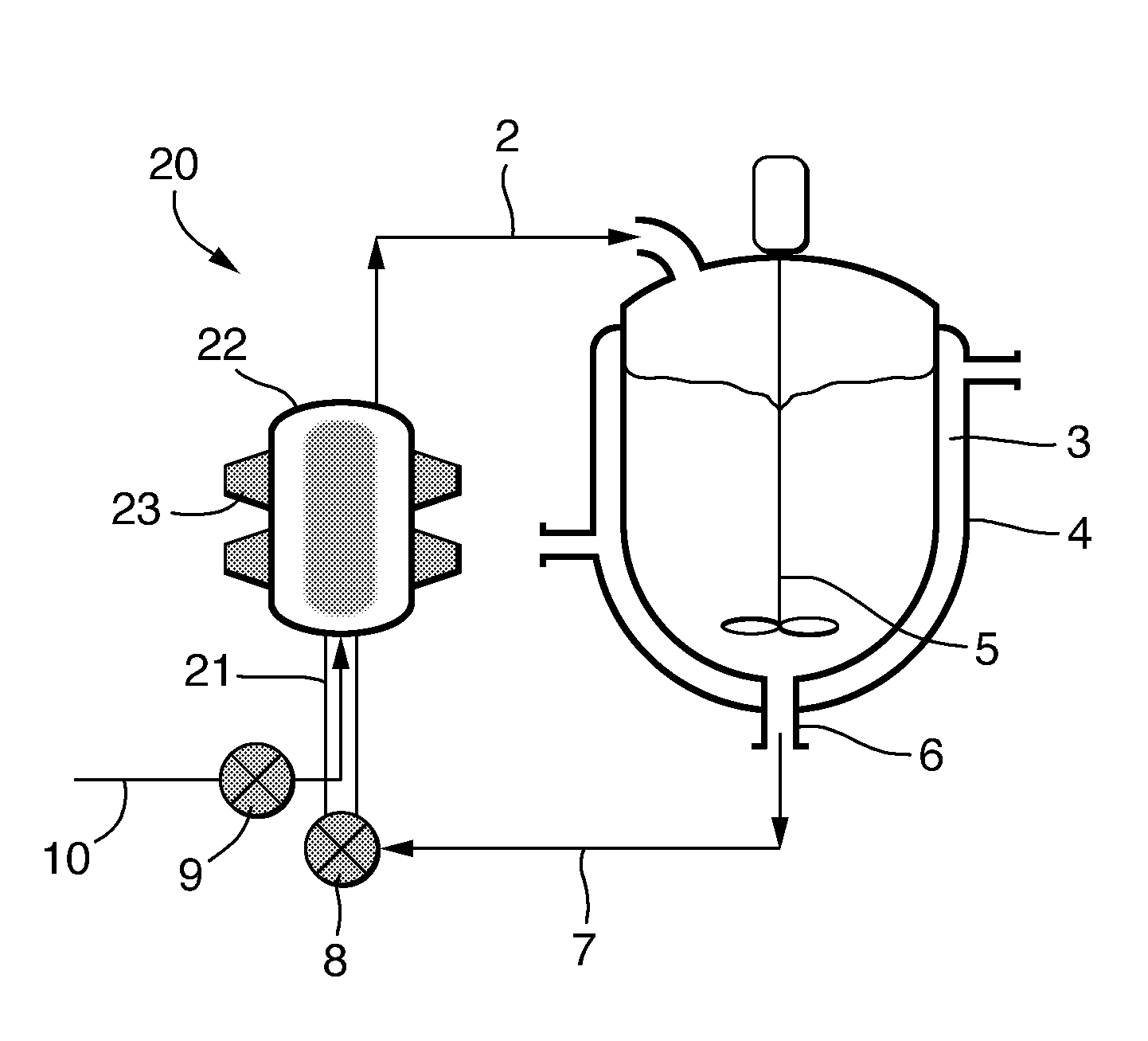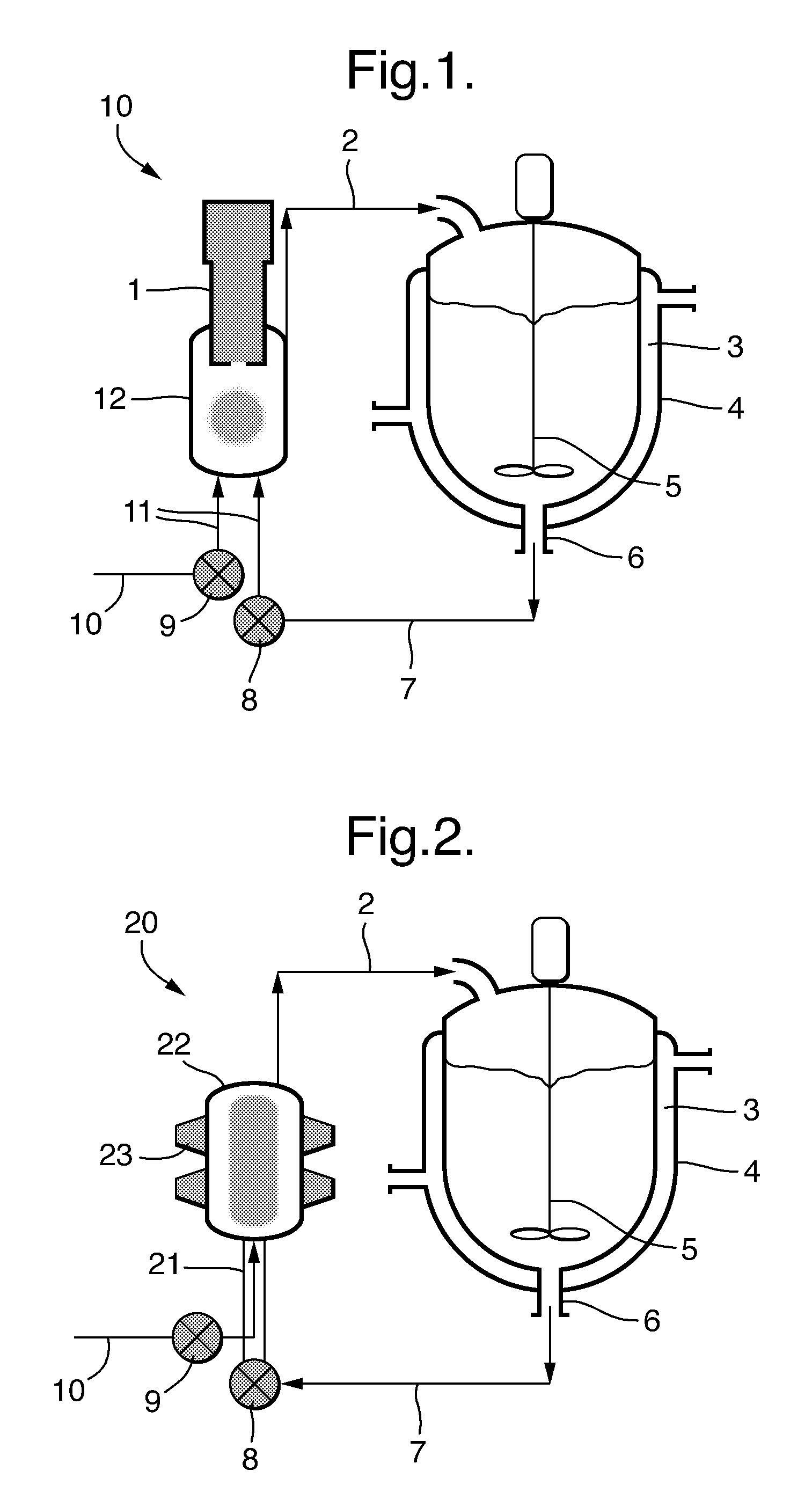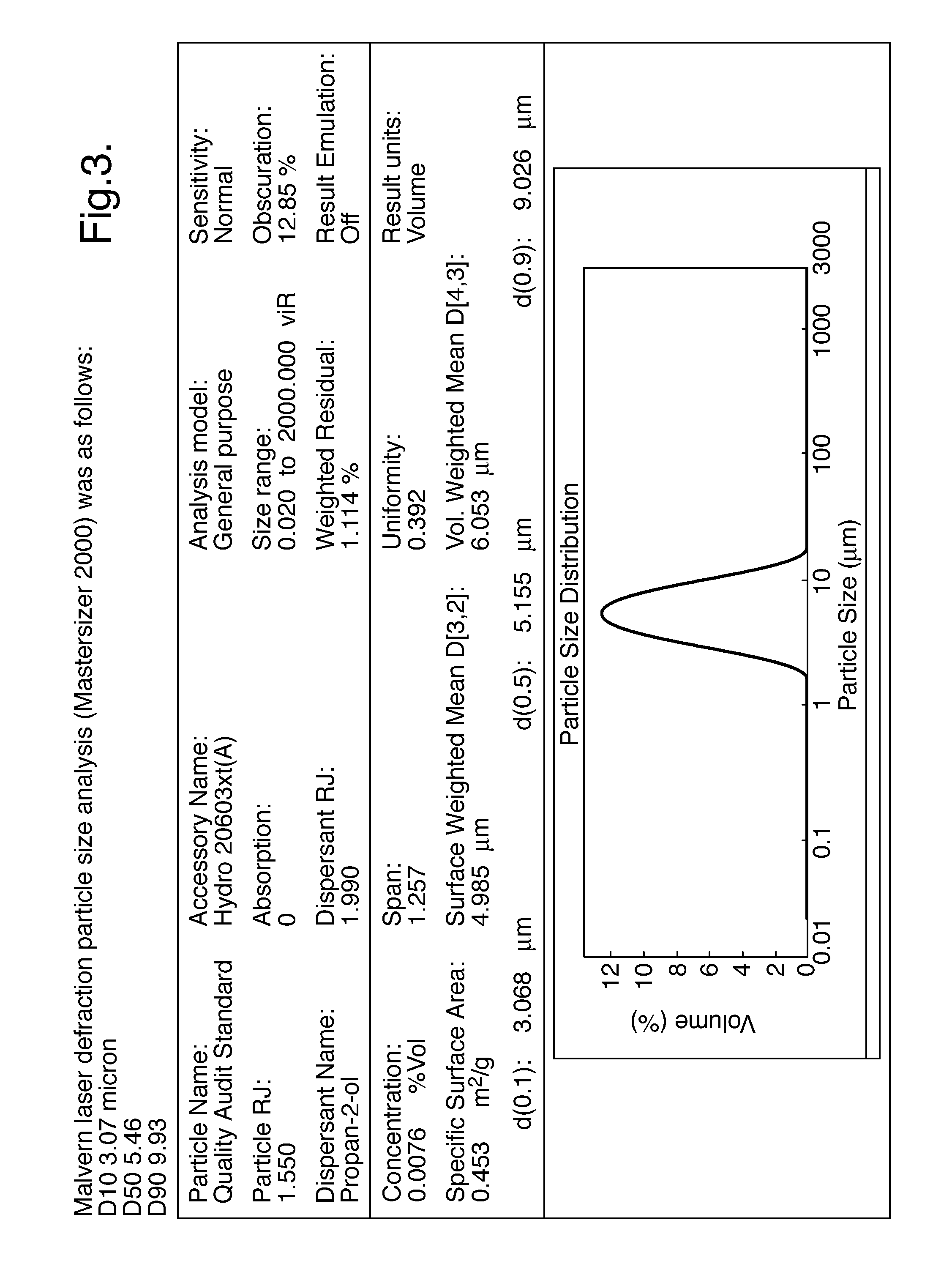Process for Making Crystals
a crystal and process technology, applied in the direction of separation process, granulation using vibration, immunological disorders, etc., can solve the problems of significant proportion of particles which are unsuitable, affecting the activity of the medicament, and forming amorphous structures, etc., to achieve the effect of optimizing the activity and/or stability of the medicamen
- Summary
- Abstract
- Description
- Claims
- Application Information
AI Technical Summary
Benefits of technology
Problems solved by technology
Method used
Image
Examples
example 1
[0048]2-Propanol (0.7 L) was charged to a 1 L stirred crystallizer (200 rpm) fitted with a thermo-regulation jacket. The temperature was adjusted to 16° C. The 2-propanol was pumped around a recirculation loop using a diaphragm pump (operating at 20 l / h) and a 60 ml thermo-regulated glass ultrasonic flow-cell fitted with a 30 mm diameter 20 kHz ultrasonic probe. The probe was held at the highest position in the flow-cell and sealed / clamped at a point of zero vibration (node point). The flow-cell was thermo-regulated at 16° C. Continuous ultrasound was applied at 15 W power, 5 μm amplitude. L-Valine (1.5 g) was dissolved in water (35 ml) and then pumped into the ultrasonic flow-cell using a second inlet on the underside of the flow-cell at a rate of 60 ml / h. Upon complete addition of the L-valine solution the microcrystalline product was isolated by micro-filtration or spray drying.
[0049]Results are shown in FIG. 3.
example 2
[0050]2-Propanol (1 L) was charged to a 1 L stirred crystallizer fitted with thermo-regulation jacket. The temperature was adjusted to 16° C. The 2-propanol was pumped around a recirculation loop using a diaphragm pump (operating at 20 l / h) and a 60 ml thermo-regulated glass ultrasonic flow-cell fitted with a 30 mm diameter 20 kHz ultrasonic probe. The probe was held at the highest position in the flow-cell and sealed / clamped at a point of zero vibration (node point). The flow-cell was thermo-regulated at 16° C. Continuous ultrasound was applied at 15 W power, 5 μm amplitude. L-glutamic acid (4.5 g) was dissolved in water (100 ml) to form a saturated solution and then pumped into the ultrasonic flow-cell using a second inlet on the underside of the flow-cell at a rate of 60 ml / h. Upon complete addition of the L-glutamate solution the microcrystalline product was isolated by micro-filtration or spray drying.
[0051]Results are shown in FIG. 4.
example 3
[0052]Heptane (0.75L) was charged to a 1L stirred crystallizer (250 rpm) fitted with a thermo-regulation jacket. The temperature was adjusted to 5° C. The heptane was pumped around a recirculation loop using a diaphragm pump (operating at 20 L / h) and a 60 ml thermo-regulated glass ultrasonic flow-cell fitted with a 30 mm diameter 20 kHz ultrasonic probe. The probe was held at the highest position in the flow-cell and sealed / clamped at a point of zero vibration (node point). The flow-cell was thermo-regulated at 5° C. Continuous ultrasound was applied at 15 W power, 5 micron amplitude. Budesonide (1.5 g) was dissolved in methanol (100 mL) and then pumped into the ultrasonic flow-cell using a second inlet on the underside of the flow-cell at a rate of 20 mL / h. Upon complete addition of the budesonide solution, the mixture was kept under recirculation for further 30 minutes. The microcrystalline product was isolated by either supercritical carbon dioxide assisted drying (to remove non-...
PUM
| Property | Measurement | Unit |
|---|---|---|
| size | aaaaa | aaaaa |
| mean diameter size | aaaaa | aaaaa |
| mean diameter size | aaaaa | aaaaa |
Abstract
Description
Claims
Application Information
 Login to View More
Login to View More - R&D
- Intellectual Property
- Life Sciences
- Materials
- Tech Scout
- Unparalleled Data Quality
- Higher Quality Content
- 60% Fewer Hallucinations
Browse by: Latest US Patents, China's latest patents, Technical Efficacy Thesaurus, Application Domain, Technology Topic, Popular Technical Reports.
© 2025 PatSnap. All rights reserved.Legal|Privacy policy|Modern Slavery Act Transparency Statement|Sitemap|About US| Contact US: help@patsnap.com



